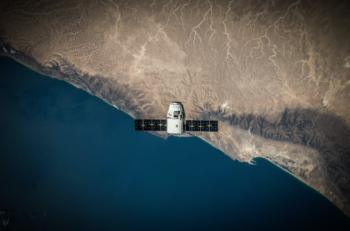AST SpaceMobile Chairman and CEO Abel Avellan, shared an upbeat assessment of the company’s progress in 2021, speaking at Rakuten Optimism 2021 last week. AST SpaceMobile made major steps toward its goal of achieving 100-percent cellular broadband coverage direct to standard, unmodified handsets from low Earth orbit satellites.
In April, New Providence SPAC (special purpose acquisition company) took AST & Science (AST SpaceMobile) public. AST SpaceMobile received $462 million from the transaction, consisting of $232 million from New Providence and $230 million from a PIPE investment, including investments from Rakuten, Vodafone, American Tower and hedge fund UBS O’Connor.
“We successfully raised all the capital that we needed to launch the initial phase of satellites and basically complete all our technology development, so that was a very, very important milestone in 2021,” Avellan said.
AST signed agreements with several terrestrial wireless providers during the year to carry its service, including Smart Communications, Africell, MUNI, UT Mobile and LIBTELCO. In addition, it has strategic partnerships with Rakuten Mobile, Vodafone Group and American Tower Corporation, which took part in the capital raise. It now has access to 1.6 billion subscribers.
“The second thing that we achieved this year was the strategic partnerships with the network operators and infrastructure providers,” Avellan said. “We raised capital with the best partners in the world.”
AST has regulatory approval in at least six countries. It is focusing first on the Equatorial countries, where it will initiate the service with the first 20 satellites. “We don’t do this alone. We need relationships with operators. We are going country by country,” Avellan said.
AST is getting ready to launch the BlueWalker 3 satellite, which is designed to communicate directly with cell phones via 3GPP standard frequencies, on a SpaceX rocket from Cape Canaveral during a window beginning March 2022. The spacecraft will be the second prototype to use AST’s technology. “We are industrializing our technology to be able to ramp up from a few satellites a year to six per month, which is, by itself, a big industrialization achievement,” Avellan said.
Technology companies, such as Lynk, OmniSpace, Vulcan Wireless, Lockheed Martin, and AST SpaceMobile are looking to create a global 5G mobile network by enabling a direct fronthaul link from the satellite to off-the-shelf consumer devices, Via Satellite reports.
A real world military example of this concept has already been established. Omnispace and Vulcan Wireless announced successful voice and data communication between its S-band non-geostationary orbit satellite and mobile tactical military communications radios in September.
“The Omnispace next-generation global 5G network is being architected to support “dual-use,” mission-critical enterprise and secure government applications,” an Omnispace official said. “Unlike legacy commercial and government networks, Omnispace’s global system is being designed in line with 3GPP 5G NTN standards, which will enable interoperability for any compatible 5G commercial or government device.”
In March 2020, Lynk Global announced that it had connected a satellite in low-Earth orbit to an ordinary mobile phone on Earth, which it said was the world’s first ever text message from space to a handset. “This breakthrough represents a key step in advancing Lynk’s vision to provide universal broadband connectivity to the over five billion people who have mobile phones but cannot access wireless signals everywhere,” a Lynk statement read.
Companies claim the global mobile broadband coverage market is anywhere from a $300 billion to $1 trillion a year opportunity.
By J. Sharpe Smith Inside Towers Technology Editor





Reader Interactions